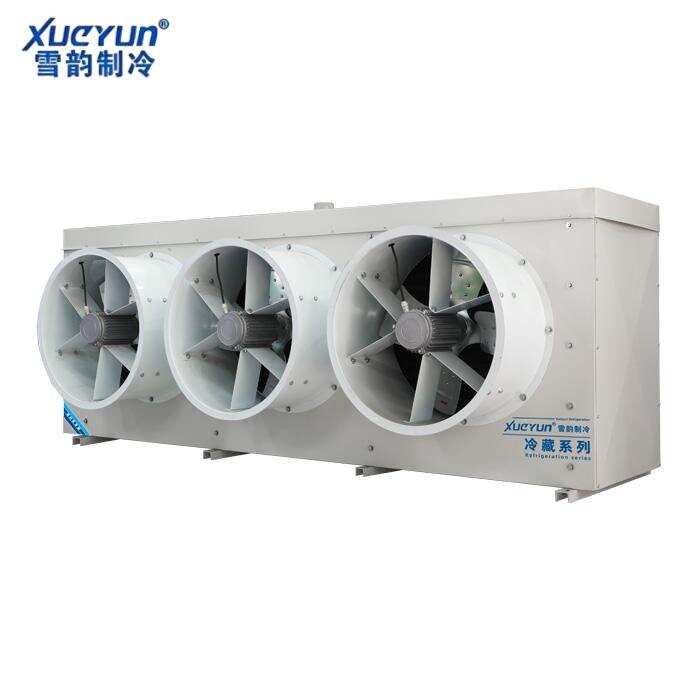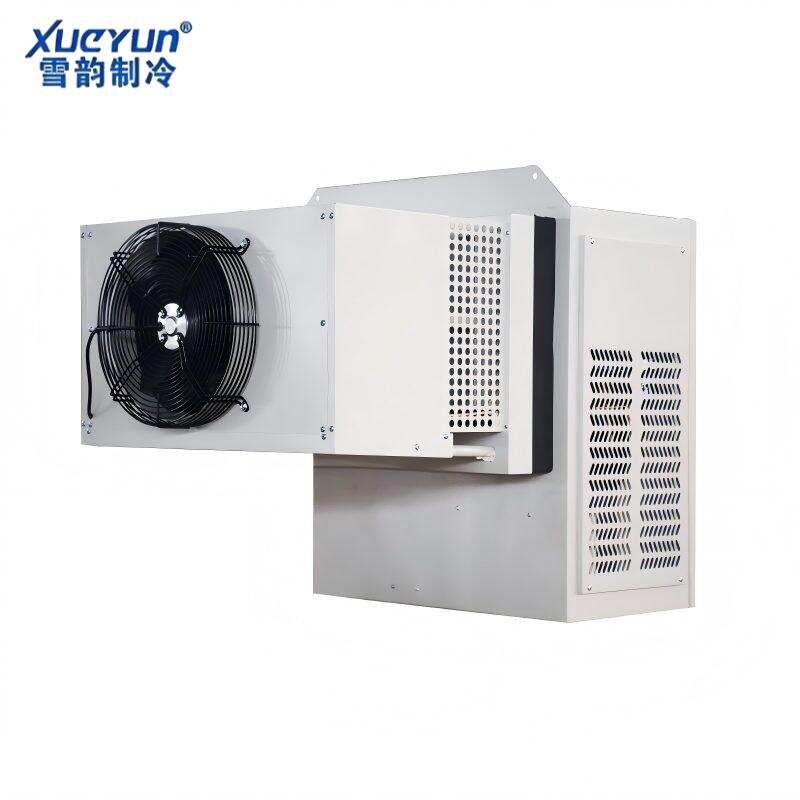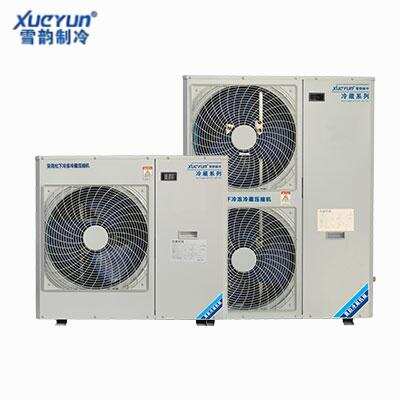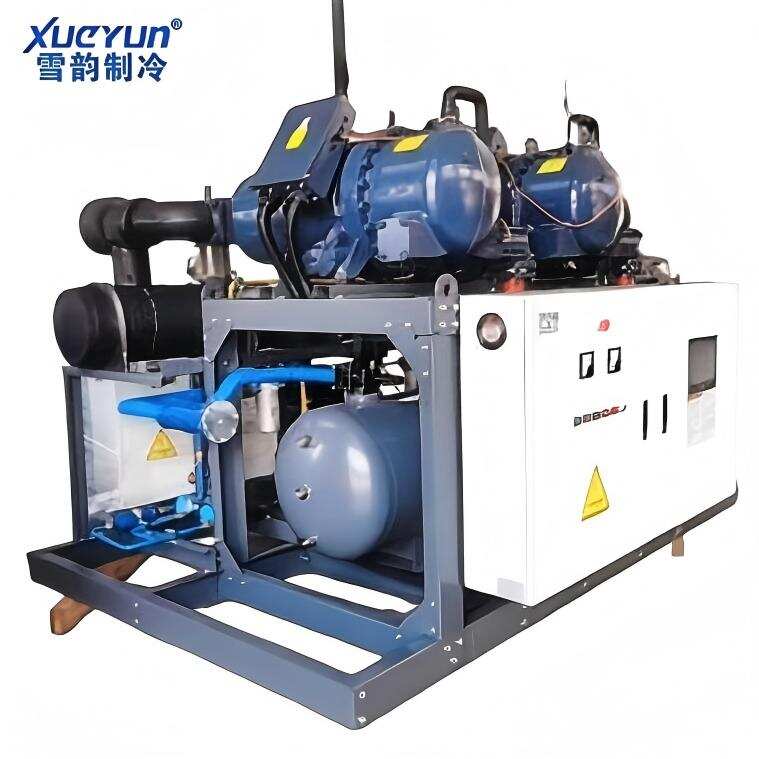
Top Products
 07.20, 2025
07.20, 2025
What Is a Cold Room Refrigeration System? A cold room is a specialized structure built to hold steady freezing temperatures, tailored to the items it stores—think how a restaurant’s industrial cold room runs at a different temp than one storing pharmaceuticals. The refrigeration system is what makes a cold room work, but to get a good one, you need to know its key parts and how they fit together.
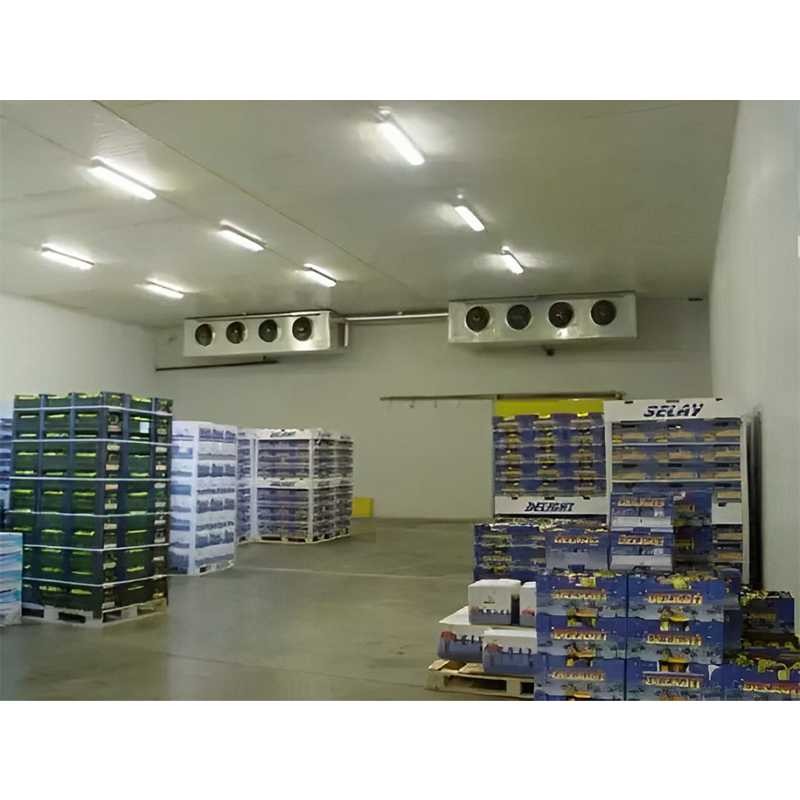 Core Parts of a Cold Room Refrigeration System - **Compressor**: The “heart” of the system, it squeezes refrigerant gas. Pick one that matches the cold room’s size and the temperature you need—too big or small, and it won’t work right.
- **Condenser**: Cools down the compressed gas, turning it into liquid. This step keeps the whole system moving.
- **Expansion Valve**: Controls how much liquid refrigerant flows through, deciding when it expands and turns to vapor to soak up heat.
- **Evaporator Coils**: Where liquid refrigerant expands and boils, pulling heat from the air to keep the coils cold.
- **Circulation Fans**: Spread the cold air from the coils all over the room, so every corner stays the same temp. Some also blow air over pipes with antifreeze (cooled by the evaporator) to keep things consistent.
Common Refrigerants What refrigerant you use depends on the system’s size and setup. Here’s what’s most often used:
- **Ammonia**: The old standby, great for huge systems (over 10,000 tons of storage) with their own machine rooms. It’s been a go-to in big industrial setups worldwide for ages.
- **Freon**: Popular for small to medium cold rooms, but experts say to limit it in large ones because of environmental issues. It can mix with ammonia in bigger systems, though.
- **CO₂**: Used in super-efficient setups like cascade or loading systems, where heat stays below a critical temp. Cascade works for colder spots, loading for warmer ones. But CO₂ systems cost more to install than ammonia or Freon.
Types of Compressors Which compressor to use depends on how big the cold room is and what temp it needs. You can also hook multiple compressors together—this makes the system more reliable, especially when the load changes:
- **Reciprocating Compressors**: Best for small cold rooms. Semi-hermetic ones are the usual pick here.
- **Screw Compressors**: Open screw types work for large rooms, often in ammonia systems because they handle big loads.
- **Scroll Compressors**: These squeeze refrigerant by spinning in a circle, raising pressure and temp. They’re quieter, smoother, and more energy-efficient than reciprocating ones, with fewer parts to break.
Liquid Supply Systems These systems move refrigerant from the condenser to parts that reduce pressure. There are four types, but two are most common:
- **Direct Expansion**: Uses refrigerant straight (no extra coolant loop). Simple, so it’s common in small systems.
- **Barrel Pump Forced Supply**: For big systems. It cools evenly and swaps heat well, but costs more upfront and has tricky oil return. Good for long-distance refrigerant movement, though, and makes compressors work better.
Where should use the Cold room refrigeration ?
Core Parts of a Cold Room Refrigeration System - **Compressor**: The “heart” of the system, it squeezes refrigerant gas. Pick one that matches the cold room’s size and the temperature you need—too big or small, and it won’t work right.
- **Condenser**: Cools down the compressed gas, turning it into liquid. This step keeps the whole system moving.
- **Expansion Valve**: Controls how much liquid refrigerant flows through, deciding when it expands and turns to vapor to soak up heat.
- **Evaporator Coils**: Where liquid refrigerant expands and boils, pulling heat from the air to keep the coils cold.
- **Circulation Fans**: Spread the cold air from the coils all over the room, so every corner stays the same temp. Some also blow air over pipes with antifreeze (cooled by the evaporator) to keep things consistent.
Common Refrigerants What refrigerant you use depends on the system’s size and setup. Here’s what’s most often used:
- **Ammonia**: The old standby, great for huge systems (over 10,000 tons of storage) with their own machine rooms. It’s been a go-to in big industrial setups worldwide for ages.
- **Freon**: Popular for small to medium cold rooms, but experts say to limit it in large ones because of environmental issues. It can mix with ammonia in bigger systems, though.
- **CO₂**: Used in super-efficient setups like cascade or loading systems, where heat stays below a critical temp. Cascade works for colder spots, loading for warmer ones. But CO₂ systems cost more to install than ammonia or Freon.
Types of Compressors Which compressor to use depends on how big the cold room is and what temp it needs. You can also hook multiple compressors together—this makes the system more reliable, especially when the load changes:
- **Reciprocating Compressors**: Best for small cold rooms. Semi-hermetic ones are the usual pick here.
- **Screw Compressors**: Open screw types work for large rooms, often in ammonia systems because they handle big loads.
- **Scroll Compressors**: These squeeze refrigerant by spinning in a circle, raising pressure and temp. They’re quieter, smoother, and more energy-efficient than reciprocating ones, with fewer parts to break.
Liquid Supply Systems These systems move refrigerant from the condenser to parts that reduce pressure. There are four types, but two are most common:
- **Direct Expansion**: Uses refrigerant straight (no extra coolant loop). Simple, so it’s common in small systems.
- **Barrel Pump Forced Supply**: For big systems. It cools evenly and swaps heat well, but costs more upfront and has tricky oil return. Good for long-distance refrigerant movement, though, and makes compressors work better.
Where should use the Cold room refrigeration ?
Cold room refrigeration setups are everywhere you need to keep things frozen or chilled long-term. Restaurants and grocery stores use small to medium units for daily food storage. Pharmaceutical companies rely on them to keep meds and vaccines at strict temps. Farms and food processors use large-scale systems to store harvests or processed goods before shipping. Even logistics hubs and ports have big cold rooms to handle international cargo like meat, seafood, or produce. Basically, any business that deals with perishables—from local cafes to global food distributors—depends on these systems to keep products fresh and safe. How to Pick the Right System for Your Needs
https://www.xueyuncold.com/product.html
The professional supplier will help you !Choosing a cold room refrigeration system isn’t one-size-fits-all. Start by asking: What are you storing? If it’s veggies or dairy, you might need a moderate temp; for frozen meat, a much colder setup. Next, think about size—how much space do you need to cool? A small café won’t need the same system as a warehouse storing 50 tons of produce. Cost matters too. Ammonia systems are cheap to run long-term but cost more to install. Freon is easier on the wallet upfront but might hit you with environmental fees later. CO₂ is green but pricey to set up. Also, check your local rules—some areas restrict certain refrigerants, so make sure your pick is legal. Don’t forget future needs. If you plan to expand, get a system that can grow with you (like adding more compressors). And talk to suppliers—good ones will ask about your daily operations, peak loads, and maintenance plans to recommend something that fits. Testimonials help too—ask other businesses in your industry what they use and why. Conclusion A cold room’s refrigeration system works because all its parts—compressors, refrigerant, supply systems—work together. Knowing how they fit helps you pick or build a system that fits your needs, whether you’re running a small shop or a huge industrial warehouse. And when in doubt, lean on suppliers who understand your business—they’ll make sure you don’t overbuy or end up with a system that can’t keep up.



